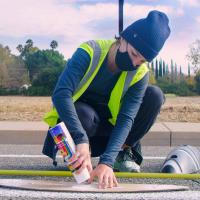The connection between transportation equity and upward mobility is undeniably evident in society today. Equal access to employment, education, and healthcare has proven to be necessary for underserved populations to flourish.
This makes the job of public transportation professionals a highly significant one. When planned well, public transit not only improves equity outcomes, but it can also lead to better public health, safety, and environmental outcomes.
What is Transportation Equity?
Households in low-income areas typically experience longer commute times and higher transportation costs. Making matters worse, poorly planned public transit systems have a direct impact on citizens’ access to better economic and educational opportunities. In metropolitan areas, residents can only reach 30% of jobs by transit in 90 minutes.
Low-income and minority communities are commonly located near highways or other transportation centers that increase air pollution – leading to adverse health effects, such as asthma. This also makes for less convenient access to healthcare centers, healthy food options, and parks.
These are all reasons why transportation equity should be top of mind for city planners. The goal of transportation equity is to give disadvantaged communities access to affordable and reliable transportation, enhanced connectivity that shortens commute times, and safer travel options. Improvements like these can better serve marginalized populations and enhance their quality of life.
How to Make Transportation More Equitable
Households with an annual income of less than $40,000 spend between 20 and 30% of their income on transportation. With such a high percentage spent on getting from place to place, it’s vital that the system goes to work for the people as efficiently as possible.
The U.S. Department of Transportation (DOT) has outlined a blueprint for improving transportation equity with suggestions such as remodeling pedestrian infrastructure, using roadside barriers and vegetation to reduce the adverse effects of pollution, and offering reduced fares to students and youth.
But there has to be buy-in at a local level, as well. City governments can prioritize transportation equity by ensuring that low-income residents have easy access to services that allow for a healthy lifestyle. Employers can contribute by making public transportation benefits available to their employees.
Reforming entire transportation systems has a lot of moving parts, and it doesn’t happen overnight. But with the use of new technology – namely, a platform called Remix – it’s getting easier and easier to make big changes that have lasting impacts.
New Tech Helps Optimize Public Transit
The founders of Remix joined forces in 2014 to build a more equitable world by expanding access within it. The team of urbanists created a platform that empowers city planners to design the best transportation systems possible, with a focus on equity and sustainability.
The Remix’s transportation software allows city decision-makers to easily collaborate across departments and evaluate datasets from multiple sources all in one place. In cities like Greensboro, North Carolina, the tech was revolutionary.
“Most people that ride the bus in a city like Greensboro plan their entire life around their access to a bus system,” explains Gray Johnston, a transit planner for the city. “From the lens of equity, our primary goal is to help people have access to the things that they need.”
And that’s exactly what Johnston used Remix to do. The platform afforded the opportunity to unpack data related to population, commute times, food and job availability, and access to health and wellness services. With that wealth of information, city planners had a solid foundation to reimagine their bus system to improve both connectivity and opportunity for low-income neighborhoods.
“We found that all our people of color (and) people with inequities are in one part of the city, and that’s in east Greensboro,” says Vonda Wingate, who specializes in equity and inclusion for the City of Greensboro. “They always had to go downtown first, transfer to another bus, and go wherever their plan was to go.”
Using Remix, Wingate and Johnston were able to import entire bus routes and source input from the community to uncover transportation gaps. From there, they could experiment with and demo new transit lines.
Now, instead of an hour-plus commute time to get to work or the grocery store, residents can take the bus to their destination in a fraction of the time. And with better routes, they’ve been empowered to seek jobs they previously wouldn’t have been able to reach.
Greensboro isn’t the only city benefitting from Remix. Over 350 local governments across the globe, from Seattle to Luxembourg, have utilized the platform to optimize city transportation planning.
The creation of a more equitable society must include a thoughtful consideration of our transportation systems. With powerful tools like Remix offering actionable insights, transportation equity could soon become less of an idea and more of a reality.


